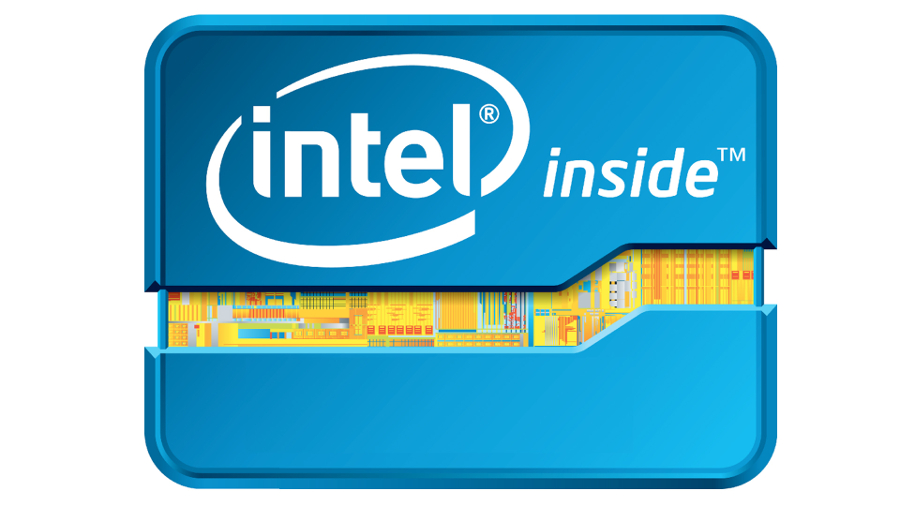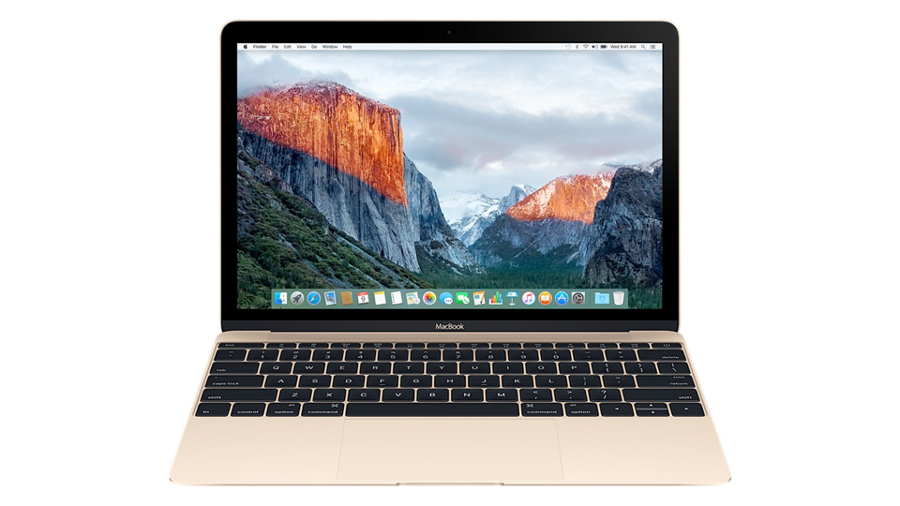Leading up to the release of Coffee Lake back in October 2017, Kaby Lake was the wildly successful follow-up to Intel’s Skylake CPUs. Kaby Lake was especially noteworthy because it was behind many of the best laptops and desktop PCs of 2017, like the 2017 Dell XPS 13 and the MacBook Pro. Kaby Lake, for all intents and purposes, took the world by storm.
Unfortunately, Kaby Lake has been an extremely confusing generation, even to people like us that spend all day reading and writing about the best processors. This is mainly because Intel abandoned its longstanding ‘tick-tock generational model where it would alternate between optimizing the architecture and shrinking their manufacturing process each year. Conversely, Intel has released the 7th and 8th generation Kaby Lake CPUs as the third and fourth generations using Intel’s 14nm process, respectively.
Intel followed its 7th-generation Kaby Lake processors by releasing its 8th-generation Kaby Lake Refresh processors for use in laptops. Intel has also recently brought hyperthreading power to its Core i3 processors for laptops.
We’ve seen leaks for an upcoming 8th generation H-series CPU as well, but it isn’t clear whether it’s another Kaby Lake R processor, or the first Coffee Lake CPU for laptops.
Kaby Lake was also subject to the devastating Spectre and Meltdown exploits, but Intel says a fix is on the way.
If all of this sounds confusing, don’t worry, we’ve taken the time to write up everything you need to know about Intel Kaby Lake – from price to availability to the range of processors available.
Cut to the chase
- What is it? Intel's 7th- and 8th-generation Core processors
- When is it out? Now for both desktops and laptops
- What will it cost? Ranges from $42 (£39, AU$66) to $350 (£415, AU$469)
Intel Kaby Lake release date
After Kaby Lake released back in 2016, we saw PC makers as reputable as HP, Dell and Lenovo launch their own Kaby Lake-packed laptops and PCs. Even though it used to be considered the standard for Intel processors in early 2017, Kaby Lake has since been succeeded by Kaby Lake Refresh and Coffee Lake.
If you’re thinking, “Wait, isn’t Coffee Lake the name of Intel’s 8th-generation architecture?”, you would be right, although the Santa Clara chipmaker has come out and said that it plans on releasing three different CPU architectures under the 8th-gen umbrella, namely Kaby Lake Refresh, Coffee Lake and Cannon Lake.
If you’re confused, you’re not alone. Intel apparently had to “reimagine what ‘generation’ means”, according to Tom’s Hardware. Regardless, what you need to know here is that Kaby Lake Refresh is coming to laptops and Ultrabooks near you, while Coffee Lake is focused on desktops.
Cannon Lake, on the other hand, will be here later, most likely in the latter half of 2018.

Kaby Lake revealed CPUs
Outside of mobile, there are well over 20 Kaby Lake chips now on the market. From the Celeron G3930 to the Core i7-7700K, practically all the choices you had last generation are still present, albeit with better power efficiency and even a slight spec boost.
The Core i7-7700K is the flagship processor this time around, unlocked for overclocking as indicated by the discrete "K" moniker. Like the generations before it, the Kaby Lake architecture opts for a numerical naming convention: it consists of the “7” series CPUs to Skylake’s generation 6, Broadwell’s gen 5 and so on.
However, Intel is trying something with Kaby Lake that’s practically unprecedented. By refreshing its 7th-generation processors with more cores, better clock speeds and improved graphics, the company has been able to create an entirely new generation out of its Kaby Lake processors as well, hence the Core i7-8550U being used in the new HP ProBooks.
As far as Intel’s 7th-gen mobile processors are concerned, the most powerful lie in the “H” series, consisting mainly of the Intel Core i7-7700HQ and the Intel Core i7-7820HK. The former can be found in the 15-inch MacBook Pro while the latter is featured predominately in high-end gaming notebooks like the Alienware 17 R4.
At Intel’s low- to medium-power range, there’s the Core i7-7500U, which initially leaked alongside the i7-7700K, but has since been found in the HP Spectre x360 as well as the Razer Blade Stealth. Intended for Ultrabooks on the top-end, this is a relatively high performance chipset, but still belongs to the "U" ultra-low voltage family.
Meanwhile, Intel’s 8th-generation Kaby Lake processors marked the debut of quad-core processors for Ultrabooks. These include the top-end Intel Core i7-8550U, which operates at a base clock speed of 1.8GHz and a boost speed of 3.7GHz. As for the graphics, you can expect integrated UHD Graphics 620 from Intel.
Further on the mobile front, the higher-end Core m5 and m7 mobile chips of the past are now being interspersed into the Y-series Intel Core family. These include the Core m3-7Y30, the Core i5-7Y54 and the Core i7-7Y75, which are being used in top-end laptops with fanless and convertible designs to complement the more power-hungry U-series processors.
Many of Intel’s 7th- and 8th-generation selections also support Optane, a memory technology that brings hard drive speeds up to par with that of SSDs.

Intel Kaby Lake first laptops
Where have these chipsets ended up? Well, they’re currently featured in a long list of notebooks, several of which we’ve already reviewed. The aforementioned Razer Blade Stealth and HP Spectre x360 are joined by the likes of the Lenovo Yoga 720 among many other Ultrabooks, 2-in-1s and full-on laptops.
The MacBook Pro, too, has been given the Kaby Lake treatment, though our review of that model is pending. Because the “H” series Kaby Lake processors typically used in the 15-inch MacBook Pros weren’t available at the time of its release, Apple’s late 2016 laptops were still clinging to Skylake up until being hastily refreshed at WWDC 2017.
Other laptops equipped with Kaby Lake processors include the new 2-in-1 Dell Latitude 7285 featuring WiTricity magnetic wireless charging and the acclaimed Samsung Notebook 9 Pro convertible laptop. Plus, there are even more Kaby Lake-based laptops expected just around the corner, like the Surface Book 2.

Intel Kaby Lake architecture
Cannonlake is likely to prove a much more exciting update than Kaby Lake and even Coffee Lake thereafter. You see, Kaby Lake is very similar to the Skylake family we're already using. This is not what we originally expected of the Skylake successor, but Intel has changed how its processor development works.
Since 2007, Intel has worked in a 'tick, tock' rhythm of upgrades, where one generation shrinks the die, followed by a generation that alters the architecture. That changed this year. As of 2016, Intel now uses a "Process, Architecture, Optimization" approach, and Kaby Lake represents that last, frankly least interesting stage.
It's still a 14nm processor that’s fairly similar to Skylake throughout, and the desktop variants will use the same LGA 1151 socket. Unless something goes terribly wrong, Cannonlake will shrink Intel CPUs down to the long-promised 10nm die in 2018.
While there are some performance improvements in store, it seems unnecessary for those with a Skylake CPU to upgrade to a Kaby Lake processor of the same level. That said, there are more options this time around, with higher end Kaby Lake-X CPUs making an impression.

Intel Kaby Lake upgrades
Despite not being the most thrilling generation of processors, there are some distinct improvements that inhabit Intel’s Kaby Lake CPUs. The first is fully integrated support for USB-C Gen 2. Skylake machines can offer this already, but need an extra third-party piece of hardware. Now, its “native”. Again, not exciting, but it is necessary.
Gen 2 USB 3.1 enables bandwidth of 10Gbps, rather than 5Gbps. Thunderbolt 3 support is in, too. In a similar vein, HDCP 2.2 support is native in Kaby Lake. This digital copy protection is a newer version designed for certain 4K video standards. Ultra HD Blu-ray is the key one, though 4K Netflix on Windows 10 also requires a Kaby Lake processor.
That’s right, Kaby Lake also offers integrated GPUs better-suited to 4K video. Thanks to a new media engine built on a Gen9 graphics architecture, users can edit real-time 4K video using nothing more than integrated graphics. For video consumption, the new VP9 and HVEC 10-bit decode will enable all-day 4K video streaming on a single charge.
And then to build on top of that dedication to better integrated GPUs, Intel has announced Kaby Lake G series CPUs that will feature integrated AMD Vega graphics to further push into a high-definition future.
Better yet, Intel’s 8th-gen processors bring integrated UHD Graphics, designed to enhance the playback of 4K video. As a result, an Ultrabook using 8th-gen chips can display across three 4K monitors at once or even power a Windows Mixed Reality headset. It should also be noted that 8th-generation Kaby Lake processors are said to be 40% faster than their 7th-gen counterparts.
Kaby Lake only officially supports Windows 10 among Microsoft’s operating systems. This is yet another attempt by Microsoft to push those lingering on Windows 7, or anything a little older, into the present.
Apollo Lake: Kaby Lake's poor cousin
It's also worth considering the low-end Atom chipsets you'll see used in very cheap laptops, Windows 10 tablets and low-power mini PCs Intel calls NUCs (Next Unit of Computing). Although they’re not part of Kaby Lake, the latest “Apollo Lake” chips started to appear in late November, with Asus and HP being among the first to implement them.
These, too, are capable of 4K video playback acceleration by way of the HEVC and VP9 codecs. This is due in part to the move from Gen 8 to the Gen 9 graphics found in Skylake processors.

Kaby Lake-X: a higher-end future
If you're only interested in mainstream Kaby Lake models, the future isn't looking too complicated. They're trickling out, before being replaced by Cannonlake CPUs in late 2018. However, the outlook for seriously high-end hardware is more convoluted.
As of a couple of months ago, the newest high-end CPUs were part of the Broadwell-E series, even though among mainstream processors Broadwell is already old news. But in June, Intel released its more powerful Skylake and Kaby Lake “X” series processors, the latter of which comes in two flavors:
- 4.0GHz quad-core Intel Core i5-7640X (up to 4.2GHz with Turbo Boost)
- 4.3GHz quad-core Intel Core i7-7740X (up to 4.5GHz with Turbo Boost)
Both of these bear TDP ratings of 112 Watts in addition to supporting quad-channel DDR4-2666 memory. They’re still built on the same 14nm manufacturing node as less “X-treme” Kaby Lake chips, but they’re very obviously geared towards gamers seeking a “great VR experience,” as all of Intel’s marketing materials would suggest.
What mere mortal laptop and desktop buyers need to take from Kaby Lake, though, is that a.) we'll see even more machines using the new chipsets very soon and b.) unless you don’t want to upgrade to a new motherboard, you might want to see if 2017’s Intel Coffee Lake will serve your needs better.
Joe Osborne and Gabe Carey have also contributed to this article
from TechRadar - All the latest technology news http://www.techradar.com/news/computing-components/processors/kaby-lake-intel-core-processor-7th-gen-cpu-news-rumors-and-release-date-1325782
No comments:
Post a Comment